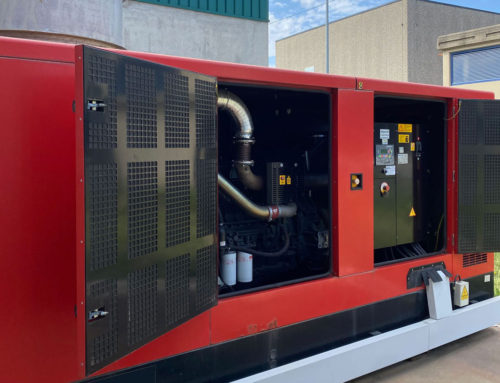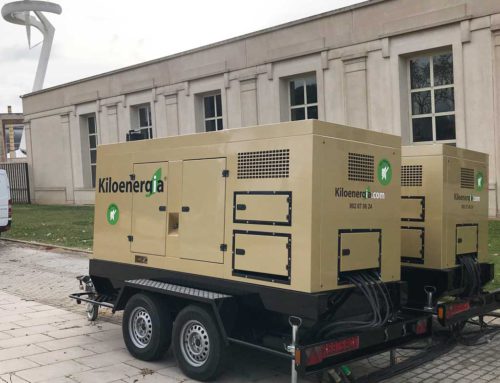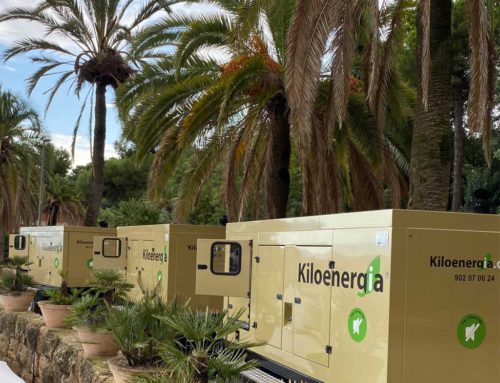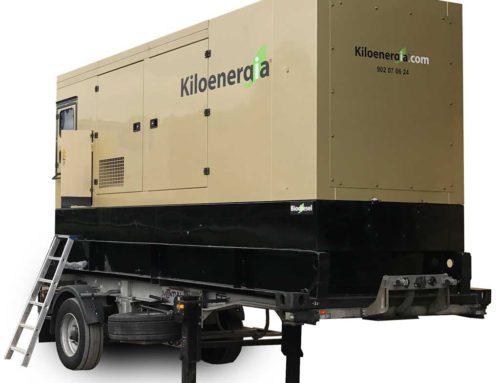Generating Sets running in parallel
Many times it speaks of groups operating in parallel, but when is this type of installation used and what are its advantages.
Connecting generators in parallel implies a technical challenge for which we need to use a very specific technology, since the groups have to work synchronously, that is, each of the generators has to give the voltage aligned with the other or the others with the that is working.
The synchronism between rental generators is mainly used in these situations:
o Redundant supply systems.
o Reach great powers.
o Reduce the individual size of the generator.
Parallel generator sets for redundancy supply systems
It is one of the great uses of this technology. Synchronizing generators is done in this type of facility to increase the security transmitted to the system.
It is a few words, if you have two rental generators supplying energy, in case of failure of one of them, stop it, you will always have the other running without the installation having any electrical zero, thus avoiding the dreaded black-out . Maximum security.
It is also very opportune because you generate a mini electrical network, which allows the resulting installation to be capable of accepting harmonics and transients that a single generator would not do.
This method is highly demanded in critical applications such as concerts, television broadcasts, fairs, congresses, defense, security and data processing centers. In fact, in some very critical installations, up to three groups are being installed in parallel, in case two of them fail.
Parallel generator sets to achieve high powers
In the event that it is desired to achieve more power than that of a single group (usually transportable rental groups usually reach up to 1250 kVA), the parallel operation of generators is also used. What is done in these cases is to couple several generating sets with powers between 1000 and 2000kVA to reach the necessary power.
Up to dozens of motors can be synchronized. These plants are very common to reinforce the electrical network in summer points (especially in islands), developing countries or in case of natural disasters. They are the so-called Power Plants.
Parallel gensets to reduce individual generator size
There are power nodes where the differences between the prices of the equipment are very large, as well as for the successive operating expenses.
An example is the case between 700 and 1000 kVA where the use of vehicular engines (trucks or buses) is used to marine engines. The latter are expensive because they are more robust and produced in smaller quantities.
SOMETIMES TWO 500KVA GENERATORS ARE MORE ECONOMICAL THAN ONE 1000kVA.
Therefore, there are cases where two 500kVA equipments in parallel will be more profitable than one 1000kVA. And not only that, but you also provide the installation with security and, in the event of a failure, or when maintenance is required on the generating sets, at least half of the power will always be available.
Another application that is being used more and more is to connect three rental generators, with two of them being the power demanded. In the event of a fault, the necessary power will always be available and without crossing zero. This, in addition to being more economical, allows to greatly reduce diesel consumption (the smaller an engine is, the less it consumes), especially when today PMS systems can be installed that allow the automatic start and stop of generating sets depending on the real energy demand.
Smaller generators connected in parallel are also used when there is a great logistics or space complexity, and two small generators with a trailer are better located, for example, instead of one large one that requires a truck crane.
What is the synchronism between generator sets?
In short, it is about acting on motors and generators of generators connected to each other, so that frequency and voltage are equal and are followed in any condition of load variation.
In alternating current, energy cannot be supplied to a network, be it public or made by generators, if the source is not adjusted beforehand so that it works at the same frequency as it.
The property of aligning frequency and voltage is called synchronism or parallel. If, once synchronism has been reached and connected to the network, the source for some reason loses this synchronism, it must be disconnected.
In the past, electromechanical synchroscopes and relays were used coupled to analog load sharing devices. Nowadays, all this is done by the control centers, communicating directly with the motors by bus protocols and also monitoring various electrical parameters with infinitesimal reaction times.






Follow us